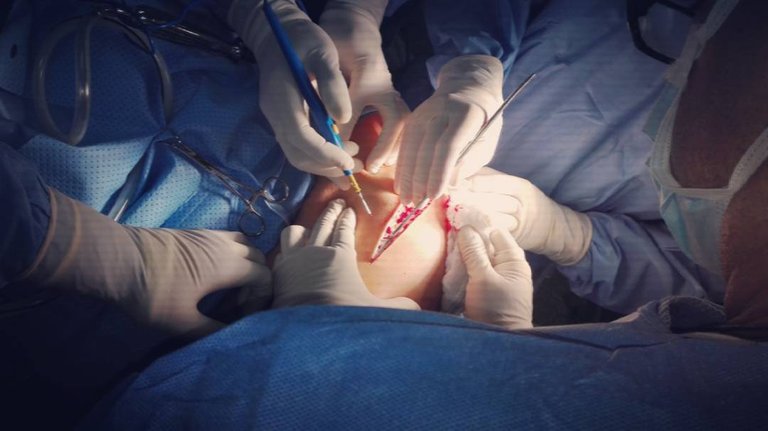

english
Nelson is a 49 year old male patient who lives in a rural area of Venezuela in Guarico State. After a traffic accident in his vehicle, he presents, among other diagnoses, the presence of a double fracture of the femur in a patient with multiple traumas. Yes.... this type of injury is rare, where one of the most resistant bones in the body is broken on both sides, but at the same time the main cause of this is car accidents.
Indeed, after our friend Nelson fell into this statistic he was operated on early, although with certain complications that made his case even more particular...
español
Nelson es un paciente masculino de 49 años de edad, habita en una zona rural de Venezuela del Estado Guárico, luego de un accidente de tránsito en su vehículo presenta entre otros diagnósticos de un paciente con múltiples traumas la presencia de doble fractura de fémur. Si… es poco frecuente este tipo de lesiones donde uno de los huesos más resistentes del cuerpo se fracture en ambos lados, pero al mismo tiempo la principal causa de estos hechos son los accidentes automovilísticos.
Efectivamente, luego de que nuestro amigo Nelson cayera en esta estadística fue operado de forma precoz, aunque con ciertas complicaciones que hicieron su caso aún más particular…

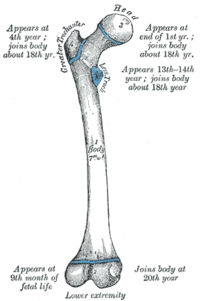

Source
The Femur
The femur is the large, long bone that runs from the hip to the knee. Its size and strength make it a great base for fixing muscles and ligaments. The femur is a long bone, which has a compact outer bone surface, with a spongy bone interior containing bone marrow, designed to relieve pressure from multiple angles. The femur forms joints with the tibia and patella, generating the tibiofemoral and patellofemoral joints respectively. At the top the femur slides into the acetabulum of the pelvis, creating the hip joint. Source
The femur is the only bone in the thigh and is the longest bone in the body. The main function of the femur is to transmit the forces of the tibia to the hip joint. It acts as the source of many muscles and ligaments and can be divided into three areas: proximal, body and distal. Source
It ensures the connection between the pelvic bones and the knee joint. It also plays a very important role in the movement of the lower extremities. Walking, running, jumping: it is essential and indispensable in all these activities. Although it is very solid, the femur can break in a violent blow like our case. Depending on the severity of the fracture, surgery may be necessary.

El Fémur
El fémur es el hueso grande y largo que va de la cadera a la rodilla. Su tamaño y su fuerza le hacen una gran base para fijación de los músculos y ligamentos. El fémur es un hueso largo, que tiene una superficie exterior de hueso compacto, con un interior de hueso esponjoso que contiene médula ósea, diseñado para aliviar la presión de múltiples ángulos. El fémur forma articulaciones con la tibia y la rótula, generando las articulaciones tibiofemoral y patelofemoral respectivamente. En la parte superior el fémur se desliza en el acetábulo de la pelvis, creando la articulación de la cadera. Fuente
El fémur es el único hueso en el muslo y es el hueso más largo en el cuerpo. La función principal del fémur es transmitir las fuerzas de la tibia en la articulación de la cadera. Actúa como origen de muchos músculos y ligamentos y se puede dividir en tres áreas proximal, cuerpo y distal. Fuente
Asegura la unión entre los huesos de la pelvis y la articulación de la rodilla. Además, juega un papel muy importante en el movimiento de las extremidades inferiores. Caminar, correr, saltar: es esencial e indispensable en todas estas actividades. Aunque es muy sólido el fémur puede romperse en un golpe violento como nuestro caso. Por lo que según la gravedad de la fractura puede ser necesaria una intervención quirúrgica.


Many surgeries:
Being femur surgeries, due to their complexity, require a team prepared in all aspects and 100% focused on the placement of the device. In Nelson's case, two surgeries (one for each femur) were necessary at first on different dates. The first surgery was on the left femur, which consisted of placing an endomedullary nail (that is, one that went through the bone and joined the two fractured fragments); one week after an acceptable recovery, the same surgery is performed on the right femur.
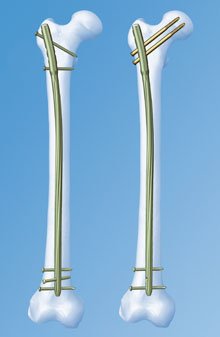
Until then, everything was going well even at the first check-ups, there were no signs of infection and the support was very controlled as it was necessary to have the support of the relatives in view of having both thighs operated. Of course, pain is not something that allows you to feel brave enough to take the first steps. However, one of those days that we don't want to remember after an inadequate effort on his left leg, he feels a strong cracking sound in the area of the operation that makes him shiver all over his body. Immediately he goes to the hospital where after some x-rays we confirm our worst fear: "the nail has broken".

This is not the first time such events have occurred, and although the materials are designed to support large amounts of weight, improper movement during the first (and most important) months of surgery can cause serious damage.
When one detects this type of situation it is not easy to explain it to the patient and his relatives, at first more than a solution, a culprit is sought, and statistics do not count in this type of difficult situation. So after some time it was planned again for a second operation on his left femur (where the nail had broken). Another nail was definitely not the solution as around the fracture the tissue had not performed a good bone key formation (that normal bone healing), being one of the main causes of the nail breakage itself.

So we removed that dead tissue and replaced it with a large bone graft called an allograft, enough to prevent it from being shortened from its lower left limb to its right limb (which, by the way, had an excellent result). The surgery was performed with great care and the fragments were successfully aligned with two screwed plates. After seeing the x-rays of the surgery we were satisfied with the results.
As if this were not enough, and after another abrupt movement on his delicate surgery, 5 months passed and we met again and it was not good news "again". Yes, after seeing the new x-rays of a surgery that had been "dreamy", we now had to see how the plaque as well as the nail "broke".

It is not easy to assimilate this kind of information as a physician, for a patient who takes his third major surgery and tells him he needs another, for the patient represents more than a concern, it represents the future of his goals and functions for life.
Our patient is currently undergoing surgery. The mobility ranges of his lower left limb are acceptable despite the complications he had, and he never presented any type of infection, so after a long physical and mental strengthening and after more than 2 years of his last surgery is still between the decision to perform a future surgery or not. There are many complications that can continue to occur in such a delicate and previously manipulated bone, so the decision will not be easy and the options that remain are few.
Even today I still remember one of my teachers telling me a very wise phrase: "Sometimes the best surgeon is the one who decides not to operate on the patient".
Varias cirugías:
Siendo las cirugías de fémur, por su complejidad, se requiere de un equipo preparado en todos los aspectos y 100% enfocados en la colocación del dispositivo. En el caso de Nelson fueron necesarios al principio realizar dos cirugías (una para cada fémur) en fechas diferentes. La primera cirugía fue en el fémur izquierdo, consistió en la colocación de un clavo endomedular (es decir que pasara por dentro del hueso y uniera los dos fragmentos fracturados); una semana después de una recuperación aceptable se realiza la misma cirugía en el fémur derecho.

Hasta entonces todo marchaba bien incluso en sus primeros controles, no había signos de infección y el apoyo era muy controlado pues era necesario el apoyo de los familiares en vista de tener los dos muslos operados. Por su puesto el dolor no es algo que permita sentirse con valentía para dar los primeros pasos. No obstante, un día de esos que poco queremos recordar luego de un esfuerzo inadecuado sobre su pierna izquierda siente un fuerte crujido en la zona de la operación que le hace dar escalofríos en todo el cuerpo. Inmediatamente acude al Hospital donde luego de algunas radiografías confirmamos nuestro peor temor: “el clavo se ha roto”.
No es la primera vez que suceden este tipo de eventos, y a pesar de que los materiales están diseñados para soportar grandes cantidades de peso, un movimiento inapropiado durante los primeros meses de una cirugía (los más importantes) puede ocasionar daños graves.
Cuando uno detecta este tipo de situaciones no es fácil explicarlo al paciente y sus familiares, al principio más que una solución se busca un culpable, y las estadísticas no cuentan en este tipo de situaciones difíciles. Por lo que luego de algún tiempo se planifico nuevamente para una segunda intervención de su fémur izquierdo (donde se había roto el clavo). Otro clavo definitivamente no era la solución ya que alrededor de la fractura el tejido no había realizado una buena formación de cayo óseo (esa cicatrización normal del hueso), siendo una de las causas principales de la rotura del clavo mismo.

Así que retiramos ese tejido muerto y lo reemplazamos por un injerto de hueso de gran tamaño que denominamos “aloinjerto”, lo suficiente para que no quede con acortamiento de su miembro inferior izquierdo con respecto al derecho (que por cierto tuvo un excelente resultado). La cirugía se llevo a cabo con gran cuidado y se logró alinear los fragmentos de manera exitosa con dos placas ajustadas por tornillos. Luego de ver las radiografías de la cirugía estuvimos satisfechos con los resultados.
Como si fuera poco, y luego de otro brusco movimiento sobre su delicada cirugía pasaron 5 meses y nuevamente nos encontramos las caras y no eran buenas noticias “otra vez”. Pues sí, luego de ver las nuevas radiografías de una cirugía que había sido “de sueños”, ahora teníamos que ver como la placa al igual que el clavo “se había roto”.

No es fácil asimilar este tipo de información como médico, para un paciente el cual lleva su tercera cirugía de grandes proporciones y decirle que necesita otra, para el paciente representa más que una preocupación, representa el futuro de sus metas y funciones de por vida.
Actualmente nuestro paciente se encuentra en proceso de una cirugía. Los rangos de movilidad de su miembro inferior izquierdo son aceptables pese a las complicaciones que tuvo, y nunca presento ningún tipo de infección, por lo que luego de un largo fortalecimiento físico y mental y tras más de 2 años de su ultima cirugía se encuentra aún entre la decisión de realizarse una futura cirugía o no. Son muchas las complicaciones que pueden seguir pasando en un hueso tan delicado y manipulado previamente, por lo que la decisión no será fácil y las opciones que quedan son pocas.
Todavía hoy recuerdo a uno de mis maestros diciéndome una frase muy sabia: “a veces, el mejor cirujano es el que decide no operar al paciente”.

Examining the patient:
Examinando el paciente.





Pese a la gran cantidad de cirugías que fueron realizadas en Nelson, actualmente mantiene rangos de movilidad adecuada para el desenvolvimiento de su rutina, con la gran limitante de que incluso nosotros no sabemos si su evolución sera satisfactoria.. ¿Operarlo.. o no? es una decisión muy difícil incluso para un gran cirujano cuando no tenemos los instrumentos adecuados.

We are doing everything possible to help many people in need of surgery, through our company Sermedic we eliminate the high costs by accepting cryptocurrencies for patients who need our help at the best price in the world and without intermediaries. You can read more about our project in:
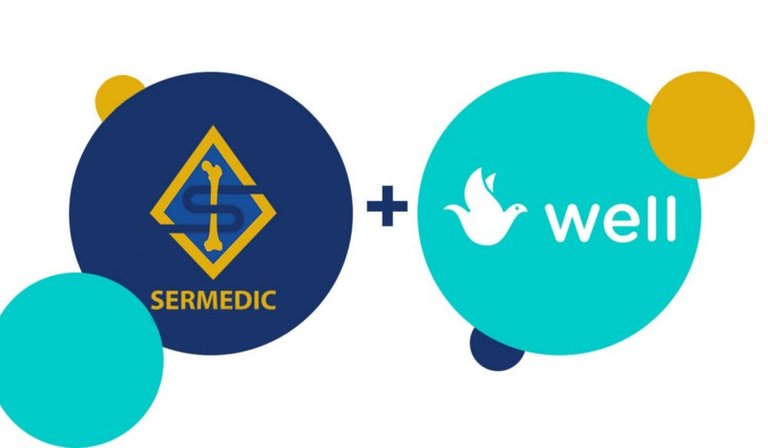
https://medium.com/joinwell/well-partners-with-sermedic-renowned-venezuelan-clinic-14f2c3362d6d
If you liked this post and you are interested in clinical cases do not hesitate to follow me. I will be publishing many more cases soon.
Text📑 and Photos 📷 by: @drmaizo
Estamos haciendo lo posible por ayudar a mucha gente necesitada por cirugías, a través de nuestra empresa Sermedic eliminamos los altos costos aceptando criptomonedas para pacientes que necesiten nuestra ayuda al mejor precio del mundo y sin intermediarios. Puedes leer más acerca de nuestro proyecto en:

https://medium.com/joinwell/well-partners-with-sermedic-renowned-venezuelan-clinic-14f2c3362d6d
Si te gustó este post y te interesan los casos clínicos no dudes de seguirme. Estaré publicando pronto muchos más casos.
Relato📑 y Fotos 📷 por: @drmaizo
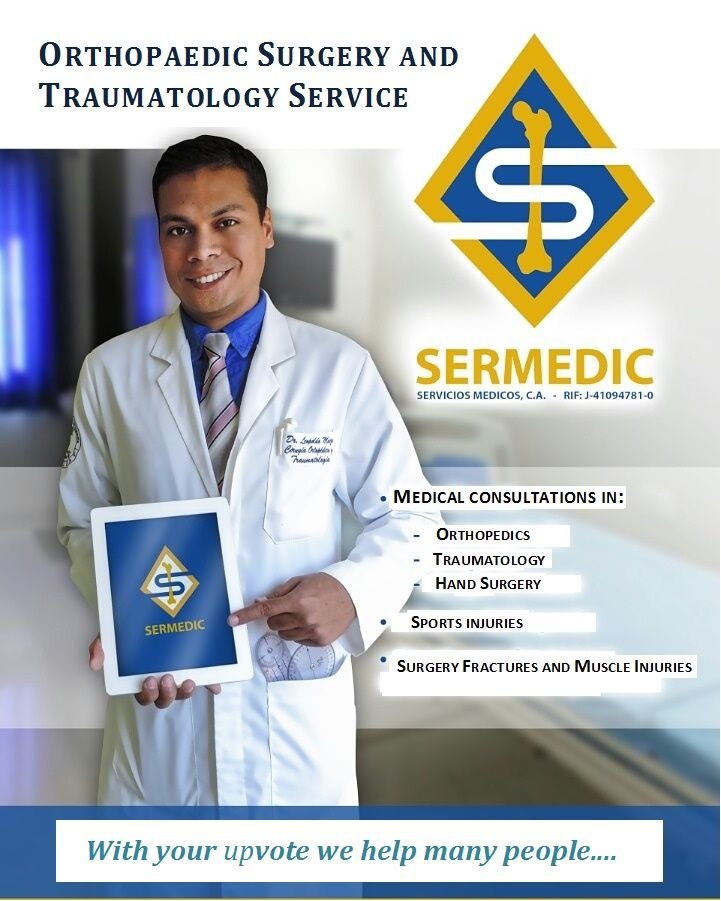
Follow me on instagram: @maizo14 // Sígueme en Instagram @maizo14

if nelson at this time need a new operation would have to go abroad because here in Venezuela and there is no alcohol in the hostals, the operation of my tibia and perone that in 2010 had a value of 12,000,000 bsf at this time 2018 has a too high a cost I think that up to 1,000 million bsf sounds crazy and is the cruel reality of our country.
Unless it is operated in a public place yes, the problem is that most of the materials are imported and resold at exorbitant surcharges, most of these surgeries are charged in pain and not in local currency for that very reason. The current situation is very strong for him and many more people.
Is this for real because it appears to be a fiction to me. Anyways, well wishes for the day from #Steemitbloggers family and please do answer my question. Have a nice day.
Totally real, my friend @amarbir, there are many things we don't know and they seem like fiction to us, but on the other side of the road there are people who suffer from very difficult situations, we do our best to help, but it is as difficult for them as it is for us. Happy day to you too. Thank you and greetings.
Keep up the good work bro.
Congratulations! This post has been upvoted from the communal account, @minnowsupport, by drmaizo from the Minnow Support Project. It's a witness project run by aggroed, ausbitbank, teamsteem, theprophet0, someguy123, neoxian, followbtcnews, and netuoso. The goal is to help Steemit grow by supporting Minnows. Please find us at the Peace, Abundance, and Liberty Network (PALnet) Discord Channel. It's a completely public and open space to all members of the Steemit community who voluntarily choose to be there.
If you would like to delegate to the Minnow Support Project you can do so by clicking on the following links: 50SP, 100SP, 250SP, 500SP, 1000SP, 5000SP.
Be sure to leave at least 50SP undelegated on your account.